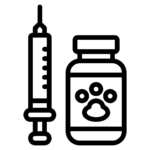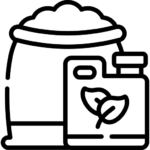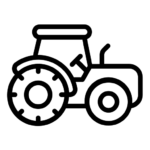In last month’s webinar, we had an expert in aquaculture discuss “Understanding and Setting Up an Aquaculture System”. This is a very useful webinar series that can help not just the aspiring aquaculture owner, but also individuals and businesses that have an interest in learning more about this growing industry and discovering some of the exciting fish farming opportunities available today.
Meet the Facilitator – Dr Yinka Akintomide,
Dr Yinka Akintomide is a Vet Consultant (PhD graduate of UI, Ibadan) with a speciality in Fish and Snail Production Management — Aquaculture and Achatiniculture. He has authored 11 books, of which four are on Aquaculture related topics.
On May 20, 2022, Dr Yinka took us through a step-by-step guide on how to set up an aquaculture system. In this free webinar series, he talked about the components of an aquaculture system, and how to choose, design, and manage an aquaculture system.
What Are Aquaculture Systems?
Aquaculture systems are production systems used for water organisms (fish mainly) propagation.
Most people go into fish farming blindly. This shouldn’t be. Not because of friends saying it’s good, but because you understand the nitty-gritty of farming fish.
Aquaculture System consists of Culture chambers and Culture water. In other cases, some filtration systems and aerators.
Culture chambers (cc) and water are vital components. Others are supportive.
Components of An Aquaculture System
Setting up a Culture System involves a careful display of the various Culture components required for fish production in such a way that the welfare of the cultured fish and culturists’ desires are well catered for.

Taking a look at this chart tells us that producing quality fish from a good system involves:
- Host – quality fish with a good genetic ability and well handled
- Quality nutrition + adequate quantity of well-managed feed
- Good/well-managed culture arena (water)
- Facilities to ensure good water quality – majorly filters and aerators
Culture Chambers
Looking at culture chambers, we need to determine:
- How to calculate the size and number of chambers to use
- Stocking density
Other related aspects to consider are:
- Water inlet design to suit your purpose
- Outlet design
Culture Chambers are important for the following:
- Culture fish retention
- Water retention
To enhance solid waste removal, it is important to ensure easy and healthy fish management.
Filtration Systems
Type of filters and ways of locally designing your own filters.
Calculations involved in determining your filter size
To design a good system, you must be able to work from:
Your pre-determined production goal (fish biomass) stocking density/no of tanks.max qty of feed the system can manage per day. Quantity of solid wastes. Filter sizing.
A Retrospective View:
Filter capacity –> waste solids/ammonia that can be managed –> max daily feed the system can manage –> fish biomass the system can tolerate.
Questions
Question: What is the stocking density of fish per space?
Response: Stocking density is based on multiple factors. There’s no fixed density to stock. It involves calculation – the reason for the program – to determine these factors with examples.
Question: How often will the water be changed?
Response: Depends on your system – stocking density (or fish biomass) in relation to system carrying capacity.
Question: Can this system be used for catfish also or only tilapia?
Response: For both. Not limited.
Question: In setting up a system like this with an aeration tank and the rest, what is the financial expense like for starters?
Response: You need to know how to relate the quantity of fish you want to raise to the culture tank size/number. This will determine if you need such filters/aerators.
Question: Do you mean when we are not doing large quantities we don’t need aerators and filters?
Response: You may and may not, depending on the above mentions factors. You may and may not, depending on the above mentions factors. For example, is your system a flow-thru system or a stagnant one?
Question: Comparing this Aquaculture System to the earthen pond which would you say is better?
Response: It depends – has advantages and disadvantages
Question: Is this Aquaculture system also used in shrimp farming?
Response: The aquaculture system is your culture system for all fish. All water organism production system.
Question: Is this filtration system necessary in an earthen system that is cheaper to set up and maintain?
Response: Not really cheaper. You can use aerators and design the pond system in such a way as to maximize it.














